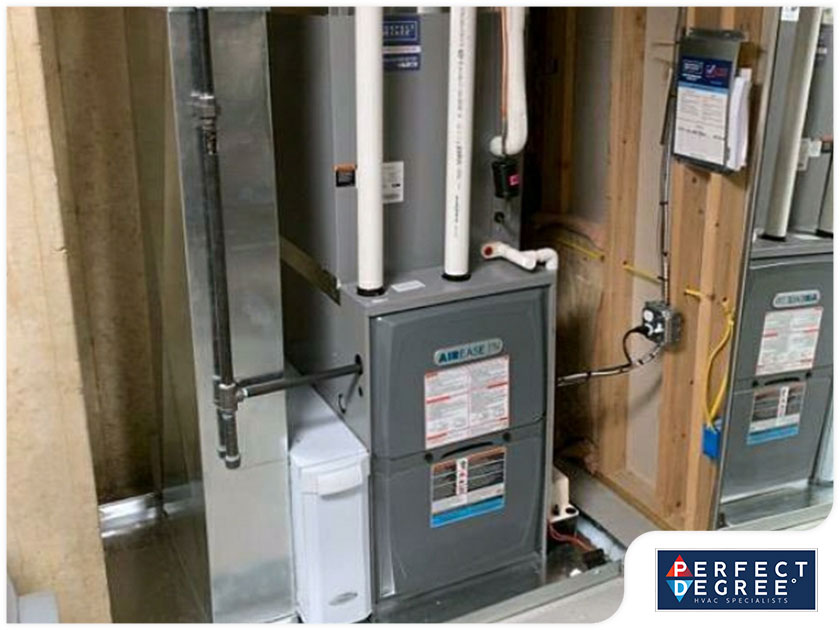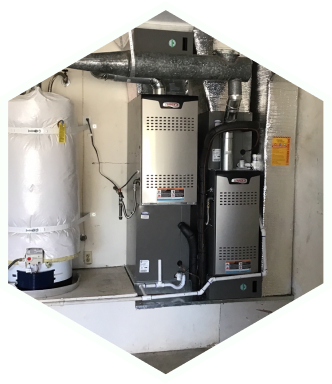Best furnace installation experts near you for optimal heating systems
Best furnace installation experts near you for optimal heating systems
Blog Article
The Ultimate Guide to Furnace Installment for a Cozy Home
Heater installation is an important element of maintaining a comfortable home setting, particularly throughout the cooler months. Comprehending the numerous kinds of heaters available and the significance of picking the suitable dimension can greatly affect both effectiveness and comfort degrees. Additionally, a thorough installation process, complemented by the right devices and products, ensures optimal efficiency. This guide aims to outfit home owners with the knowledge required to make enlightened decisions and execute reliable upkeep methods. As you think about these variables, the inquiry continues to be: what steps can you take to ensure your heating system offers you well for years to come?
Types of Heating Systems
When taking into consideration heating system installation, recognizing the various sorts of heating systems available is important for making a notified decision. The main kinds of heaters consist of gas, electric, and oil heating systems, each offering distinctive advantages and factors to consider.
Gas furnaces are one of the most typical option because of their performance and lower operational prices. They use gas or gas, providing fast home heating and constant efficiency, making them optimal for colder climates.
Electric furnaces, while typically less complicated to install and preserve, have a tendency to have greater functional costs. They are commonly preferred in locations where gas service is unavailable or for homes with existing electric framework.
Oil furnaces, though much less typical today, remain a viable alternative in certain areas. They shed heating oil, which can be helpful during cooler months, but their reliance on oil delivery poses possible difficulties.
In addition, there are high-efficiency designs offered across these types, which can significantly reduce power consumption and energy costs. Eventually, recognizing these heater kinds will help property owners pick a system that lines up with their home heating needs, budget plan, and power preferences.
Choosing the Right Size
Selecting the appropriate dimension for a heater is critical to ensuring optimal performance and power efficiency. A small furnace will have a hard time to preserve comfortable temperatures throughout the chilly months, resulting in boosted deterioration, greater energy expenses, and potential system failure. Alternatively, a large heater might cycle on and off as well frequently, resulting in ineffective heating and uneven temperature circulation within the home.

Heating system sizes are commonly measured in British Thermal Systems (BTUs), which show the quantity of power called for to heat a room. It is advisable to seek advice from with a qualified cooling and heating professional who can carry out the necessary computations and advise a properly sized unit. furnace repair. Purchasing the ideal furnace dimension not only improves comfort yet additionally adds to long-lasting energy savings and system dependability
Setup Refine Introduction
When the appropriate furnace dimension has actually been established, the next action includes recognizing the installation procedure. This process typically starts with a complete evaluation of the installation website, consisting of the existing ductwork and air flow systems. Correct preparation is necessary to make certain seamless assimilation and optimal performance of the brand-new furnace.
The installation typically includes disconnecting the old unit, which includes safely getting rid of any electrical links, gas lines, and ductwork connected to the previous heating system - furnace repair. When cleared, the brand-new heating system is very carefully positioned and leveled, ensuring that it meets the producer's requirements for optimal procedure
Following, the installer will connect the necessary gas and electric lines, sticking to regional codes and safety regulations. Following this, ductwork might need to be customized or changed to accommodate the brand-new system, making sure efficient airflow throughout the home.

Important Tools and Materials
Collecting the important tools and materials is critical for a successful heater installment. Correct prep work guarantees that the setup process is efficient and minimizes the capacity for errors.
Key devices called for include a drill, screwdrivers, wrenches, pliers, and a degree. A multimeter is essential for electrical connections, while a pipe cutter and adjustable wrench are necessary for gas line installment. Furthermore, a measuring tape and a stud finder will assist in guaranteeing accurate placement and safe and secure attachment of the furnace.
In regards to materials, the original source you will certainly need ductwork, insulation, and securing tape to make certain optimum airflow and energy effectiveness. It is additionally crucial to have a brand-new heating system filter on hand, together with venting products, such as PVC pipe or metal flue, relying on the type of furnace being installed.
Safety and security devices, consisting of handwear covers, safety glasses, and a face mask, is also important to shield against dirt and debris throughout installation. Having all these devices and materials conveniently click for info available not only simplifies the procedure but likewise enhances the safety and security and performance of the heating system setup.
Maintenance Tips for Longevity
To ensure the longevity of your heater, it is necessary to carry out a routine maintenance timetable that attends to key components of the system. Begin by changing or cleansing the air filter each to three months, as a clogged up filter can restrict air flow and lower efficiency. Furthermore, evaluate and cleanse the blower assembly to stop dust accumulation that can hinder performance.
Next, examine the thermostat setups and rectify if necessary to ensure accurate temperature level policy. Evaluate the ductwork for leakages or blockages, as this can cause energy loss and irregular heating. Frequently lubricate the motor and bearings according to the maker's recommendations to lessen damage.
Professional evaluations must happen yearly, where a certified technician can evaluate the heating system's total problem, check for gas leakages, and guarantee that safety attributes are operating appropriately. Lastly, take into consideration installing a programmable thermostat to maximize power usage and maintain regular home temperatures. By embracing these maintenance practices, you can boost your heating system's performance, prolong its life expectancy, and inevitably enjoy a relaxing and comfy home setting.
Verdict
Reliable heating system setup is essential for accomplishing optimal home comfort and power performance. Understanding various furnace types and picking the ideal size guarantees proper performance (furnace repair). A meticulous installation process, sustained by the right devices and products, contributes considerably to the system's recommended you read performance. In addition, normal maintenance plays an important function in extending the lifespan of the heater. Sticking to these guidelines promotes a cozy and inviting living room, vital for sustaining the challenges of chillier months.
Report this page